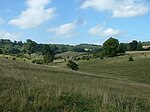Tring Park School for the Performing Arts
Boarding schools in HertfordshireDance schools in the United KingdomMember schools of the Independent Schools Association (UK)Private schools in HertfordshireRelocated schools ... and 3 more
Schools of the performing arts in the United KingdomTringUse British English from September 2018
Tring Park School or Tring Park School for the Performing Arts is an independent co-educational day and boarding school in Tring, Hertfordshire, England, offering academic and vocational courses in the Performing Arts for pupils aged 8–19. The school comprises a Prep School, a Lower School, a Middle School and a Sixth Form. Originally known as the Arts Educational School, Tring Park, it was founded as the sister school of the Arts Educational School, London. In 2009 it became independent of the London school and was renamed Tring Park School for the Performing Arts.
Excerpt from the Wikipedia article Tring Park School for the Performing Arts (License: CC BY-SA 3.0, Authors).Tring Park School for the Performing Arts
Mansion Drive, Dacorum
Geographical coordinates (GPS) Address External links Nearby Places Show on map
Geographical coordinates (GPS)
| Latitude | Longitude |
|---|---|
| N 51.79285 ° | E -0.65635 ° |
Address
Tring Park School for the Performing Arts
Mansion Drive
HP23 5LX Dacorum
England, United Kingdom
Open on Google Maps








